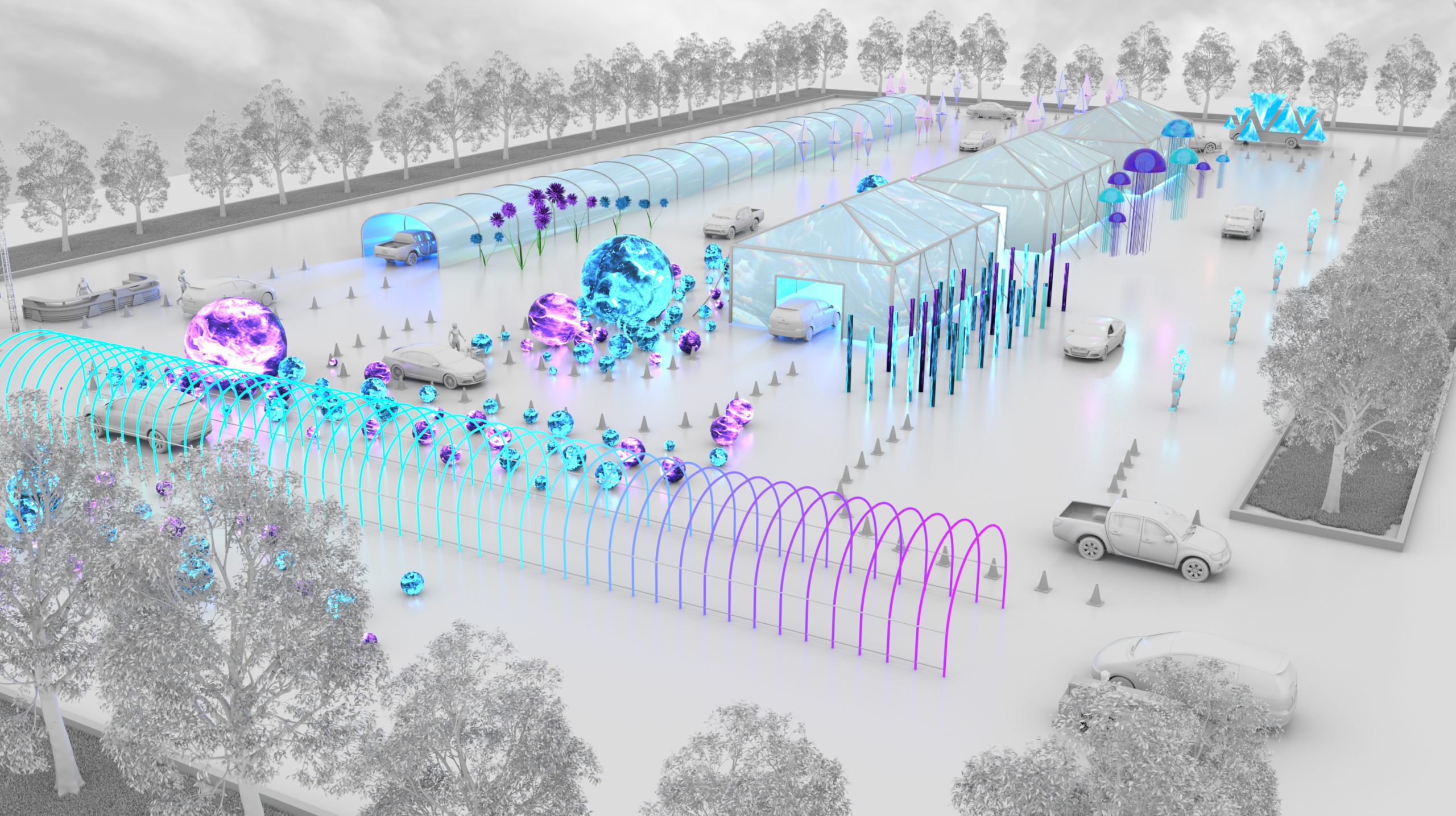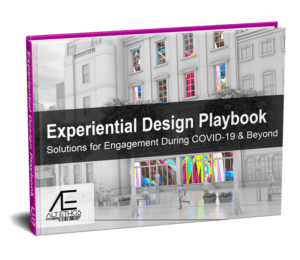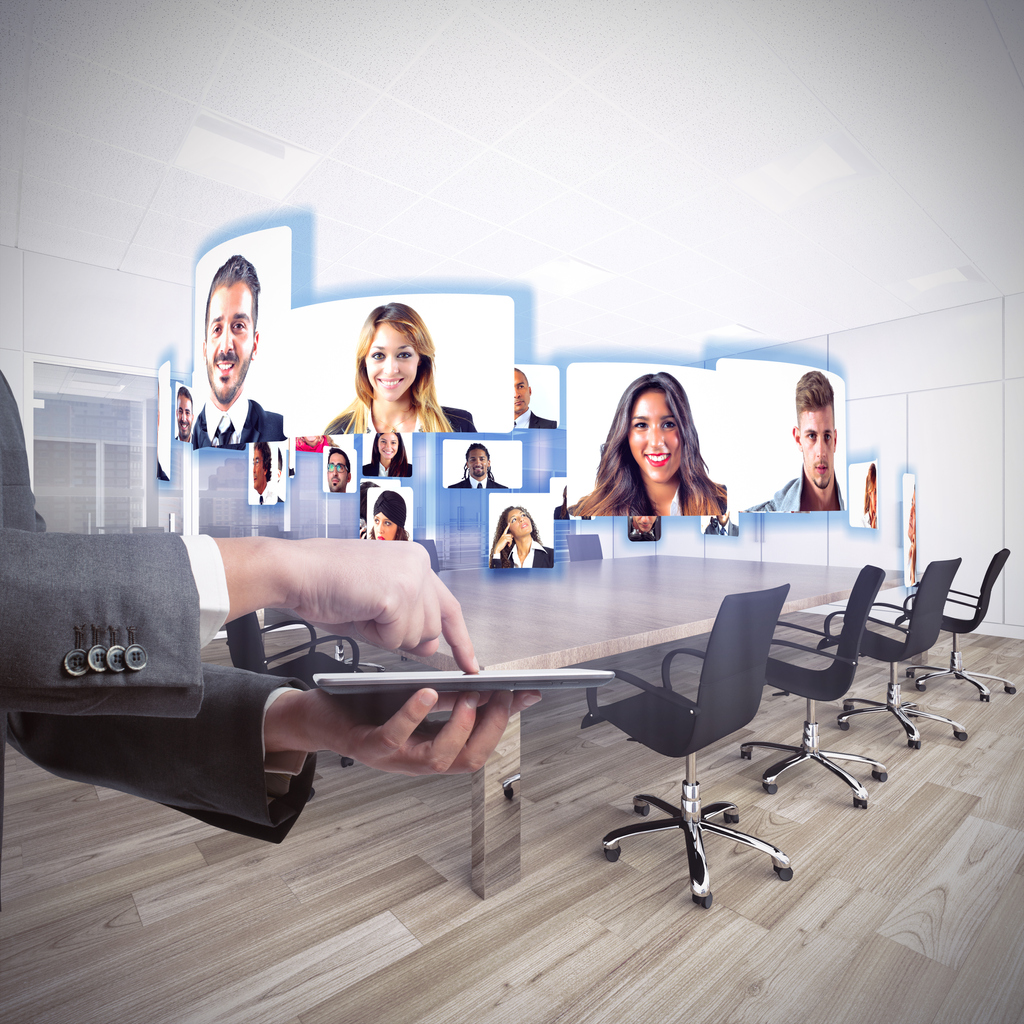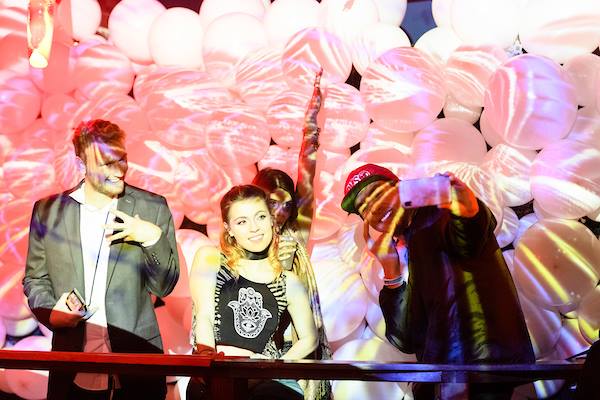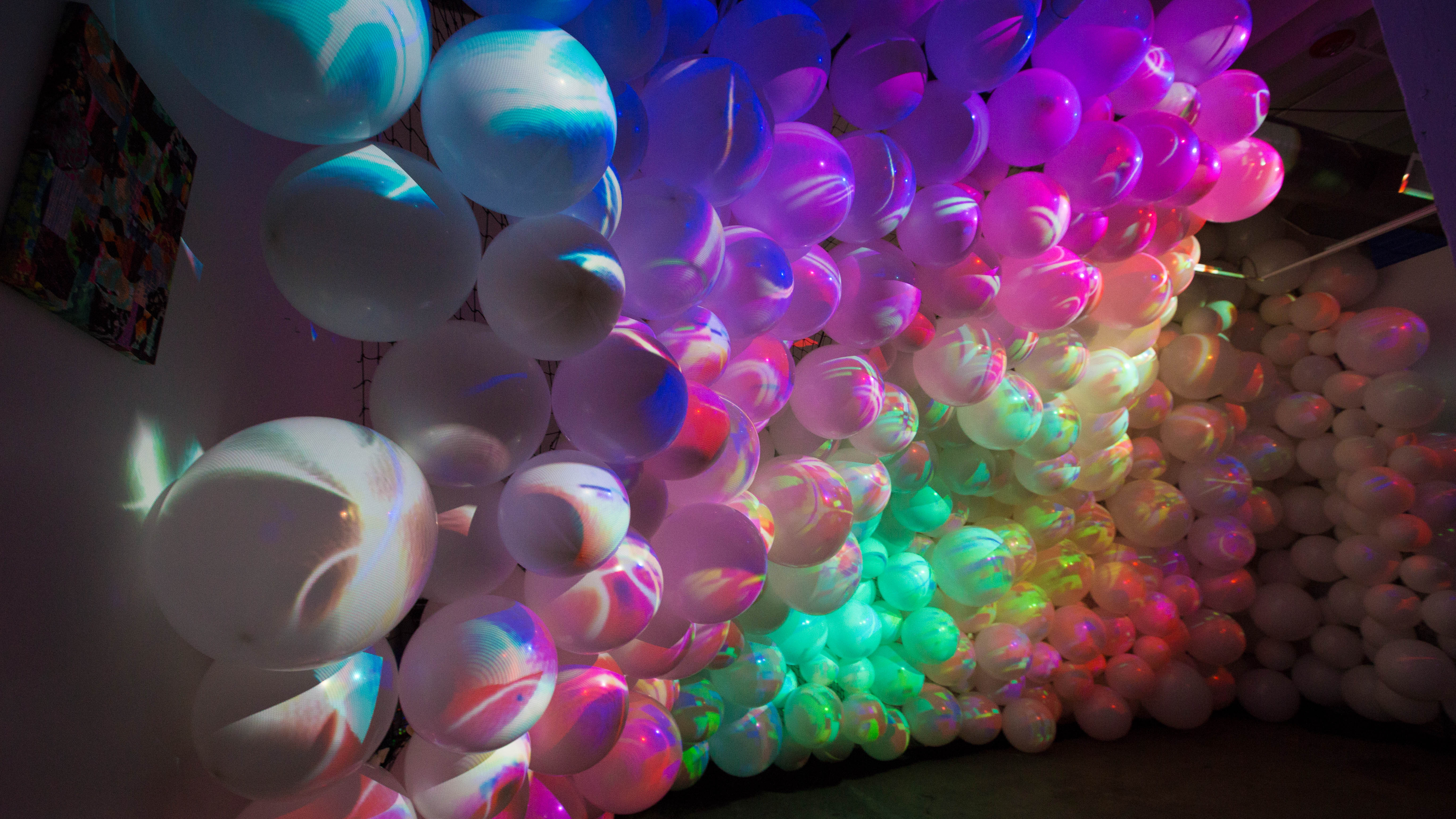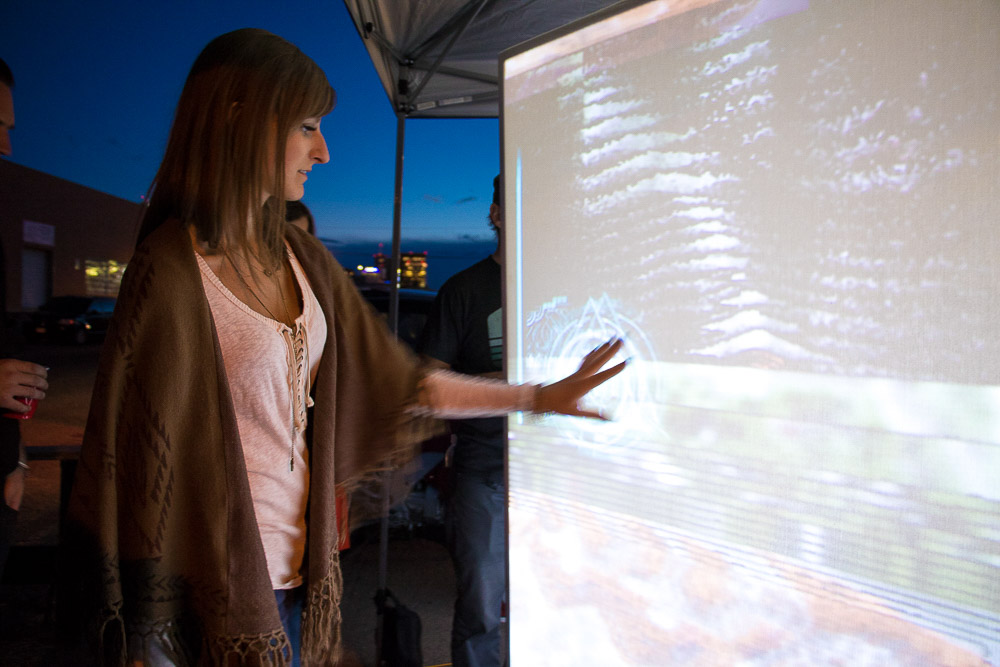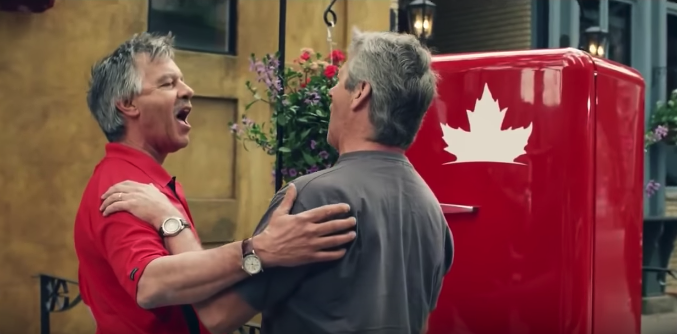
by admin | Jun 17, 2020 | Community, Immersive Lighting Design, Services
Public spaces are undergoing transformations as we navigate new rules and guidelines for social interaction. Lighting design reinvigorates places and brings them to life. Murals or large building surfaces can be transformed into glowing dreamlike creations when they would otherwise be obscured in shadow. Architectural lighting revitalizes our neighborhoods to support vibrant urban life, creates a sense of security and safety, and attracts new economic activity.
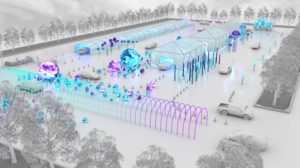 Groups like the Project for Public Spaces have valuable information on the best ways to move forward with engaging community spaces in this time of transition. In our recent Experiential Design Playbook: Solutions for Engagement During COVID-19 & Beyond, Alt Ethos outlines a number of inspirational designs for public spaces that bring joy and engagement to our communities in creative and safe ways. Via projection mapping, LED wash lighting, and no-touch interactive displays – an entire public square can be activated. Whether we are gathering six feet apart in a public square, or passing through our usual main street now filled with outdoor public seating options — an experience can be illuminated with creative lighting design in simple and impactful ways.
Groups like the Project for Public Spaces have valuable information on the best ways to move forward with engaging community spaces in this time of transition. In our recent Experiential Design Playbook: Solutions for Engagement During COVID-19 & Beyond, Alt Ethos outlines a number of inspirational designs for public spaces that bring joy and engagement to our communities in creative and safe ways. Via projection mapping, LED wash lighting, and no-touch interactive displays – an entire public square can be activated. Whether we are gathering six feet apart in a public square, or passing through our usual main street now filled with outdoor public seating options — an experience can be illuminated with creative lighting design in simple and impactful ways.
 When people are venturing out with their families this summer, they will be on the hunt for engaging experiences, community events, and comfortable interactions that will give a much-needed lift to their spirits. Seeing their favorite public places brought to life with light would be a great way to do just that. Through public installations and interactive experiences, such as the Illuminous interactive projection-mapped mural in Fort Collins, CO, our communities can be welcomed back to shopping and spending time in public spaces with fresh, inspired eyes.
When people are venturing out with their families this summer, they will be on the hunt for engaging experiences, community events, and comfortable interactions that will give a much-needed lift to their spirits. Seeing their favorite public places brought to life with light would be a great way to do just that. Through public installations and interactive experiences, such as the Illuminous interactive projection-mapped mural in Fort Collins, CO, our communities can be welcomed back to shopping and spending time in public spaces with fresh, inspired eyes.
We encourage downtown development authorities and businesses to convert public spaces into interactive art using projectors, lighting effects, and sensors. These placemaking initiatives not only offer free public access to an immersive, child- and pet-friendly experience, but are proven to stimulate greater economic activity.
Alt Ethos, in partnership with Reactiv.io, recently illuminated Denver’s iconic brick mansion by the Downtown Aquarium and I-25. Together, Alt Ethos and Reactiv are creating experiential designs in Denver to inspire connection. Future immersive collaboration includes the Tennyson Street / Berkeley area – one of Denver’s most historic neighborhoods with private immersive themed bungalow experiences.
Architectural lighting in conjunction with an urban revitalization plan acts as a vehicle that reconnects people with a sense of place to emphasize the true strengths of a community. In 1989, the city of Lyon, France, introduced one of the earliest holistic lighting master plans to revitalize the dense historic core of the city. The origins of the festival date to 1643 when Lyon was struck by the plague. Today, Lyon is known as the “capital of light,” hosting the largest festival dedicated solely to illumination, the Fête des lumières, in part commemorating the day Lyon was consecrated to the Virgin Mary. The 2019 festival attracted 1.8 million visitors over 4 days.
Urban design has taken on a new level of importance to keep the residents of urban areas feeling safe. Alt Ethos works in collaboration with city planners and corporations to commit to the health and vitality of its community. Contact us to set up a complimentary consultation on how your downtown shopping area, municipal buildings, or public park can be activated with light.

by admin | May 27, 2020 | Community, Event Rental, Public Art, Services, Technology
To all of you, we at Alt Ethos have been working hard to innovate solutions for this changing time. Communities and organizations around the world are at a high level of confusion, overwhelm, and disconnection. Like you, we had our times of frustration as we navigated the rough waters of the unknown. We also saw it as an opportunity.
Consider this a call out to those who seek to create joy and connections in your communities and constituents. We want to work in collaboration with you, the dreamers, the visionaries, and future thinkers. That is why we created the Experiential Design Playbook: Solutions for Engagement During COVID-19 & Beyond.
Our communities are starting to come out of stay at home orders around the globe. How shall we experience community spaces and not end up on national news like the Memorial Day waterpark parties? Watching these gatherings can make you feel unhinged and afraid to engage. In this desire to re-open and reconnect with our constituents, we intend on providing flexible solutions that retain ROI if and when another wave of shutdown orders occurs.
That is why Alt Ethos has been doing research and design since the closing of the first major international event in the United States, SXSW.
During this crisis, that feeling of isolation can make everyone feel disconnected. If municipalities and corporations can’t find a way to safely connect with their constituents, they miss the chance to provide support and a sense of well-being.
Now is the time to step up and activate your communities and create the future of placemaking, entertainment, and advertising. A culture that is resilient, fun, and provides an opportunity for connection. It is our destiny as humans to create new solutions, visions, and activations to reinvigorate the next steps in social healing. It is the responsibility of our cities, our libraries, our public art, and our local businesses to reconnect with our communities.
Your contribution to the recovery of this crisis is going to be massive. You are creating the future of community building and entertainment. We know we are a small percentage of the population that imagines the future even in the time of a world crisis. We are looking for you to create, to connect, and to activate new solutions.
Get started by downloading our new Experiential Design Playbook. First, to get an idea of what is possible and mutable in uncertain times. Second, to increase the support your constituents feel connecting a greater bond to your city or your brand. Create activations that make your message easier to hear, simultaneously inspiring engagement and making a contribution to your community.
Learn all about our COVID re-entry experiential design solutions:

Get the Playbook
The world is ready to come out and play while feeling safe and secure in doing so. Let’s put some joy and connection back into everyone’s lives.
Alt Ethos is looking for forward-thinkers and creators – we are ready to work with you.
Be well,
Ethan
CEO, Alt Ethos

by admin | Apr 2, 2020 | Design Services, How to, Mixed Reality, Virtual Reality, Virtual Worlds
Since coronavirus was declared a pandemic, the phrase “Just another day at the office” has taken on a whole new meaning. When nationwide social distancing was put into place, millions of face-to-face events and meetings were canceled or postponed.
Thankfully, video conferencing makes it possible to stay connected in work and in life without risking the health of yourself or others. Make virtual conferencing a breeze for your audience with Alt Ethos’ 8 things you can do in advance that will make the transition to virtual conferencing easier.
1. Choose a Platform
There are a number of video conferencing applications out there, and not all are created equal. FaceTime and Messenger are great for chatting person-to-person, but when it comes to virtual events and conferences, you will need more capabilities and features. Consider the following when choosing which platform to use:
- How many people will be in the meeting?
- Is it an interactive meeting or more one-sided?
- Will you need screen share capabilities or other multimedia features?
- What are your tech needs in terms of sound and lighting?
2. Set Expectations Ahead of Time
Have you ever walked into an event or meeting expecting one thing and come out having experienced something entirely different? That can easily happen with video conferences too, and it’s not an experience you want to give your attendees. Set the tone for smooth interactions online before attendees sign up by clearly outlining:
- Which platform the event or meeting will be held. Is there a capacity limit or deadline for signing up?
- What their role in the virtual conference will be. Is it an interactive session where they’ll need to be ready to provide feedback and commentary?
- What level of engagement you expect from them. Will they need to show up with video on, or is audio only okay?
3. Create a Workable Agenda
Because everything is virtual, it’s tempting to think you can pack more in a short window of time. Resist the urge, says Jeff Cobb of Leading Learning in his article “12 Tips for a Successful Virtual Conference”.
“The brain can only absorb what the butt can endure. Shorter is often better for sessions. And don’t forget to build in breaks—attendees will appreciate 15 minutes to check voicemail and e-mail and address other needs. Even in the virtual world, people have to go to the bathroom.”
4. Prep Your Attendees
Once your attendees have signed up, you’ll need to let them know some basic information about the virtual sessions. what you’ll be discussing, who will be there, and what they can do ahead of time to be ready for the meeting. Send out an email with a basic outline of the virtual session. Don’t forget to tell them if there’s anything they’ll want to have on hand to help them get the most out of the session, like a notebook and pen.
5. Be Available to Answer Questions
Virtual conferencing is going to be a new experience for some. The more education and answers you can provide BEFORE the conference call or virtual event starts, the less you’ll have to provide during the actual event.
“Folks will be more likely to pay—whether for a big-ticket sponsorship or a simple registration—if they can see for themselves what the virtual conference will be like,” said Cobb. Make a screen share video with step-by-step instructions on how to sign up for and install the video conference app you’ll be using, and plan to have extra tech support available to answer questions. Designate a specific email, messenger chatbot, or phone line for questions.
6. Do a Trial Run
If you have staff, speakers, or sponsors who will also be involved in the online event, spend time before the event putting resources in place so they feel comfortable and ready to do their part when the time comes.
Consider giving speakers and sponsors a free pass to test out the platform ahead of time, and don’t be afraid to do a trial run or two. You can’t always troubleshoot issues if you don’t know what issues to look for. A trial run will give you a chance to identify any bumps that need to be smoothed over.
The more prepared your staff is, the less stressed you’ll be. Run some contingency plans for customer service issues and create clear guidelines for how staff can help with things like Q&As and breakout sessions.
7. Don’t Forget the Reminder
People are busy, so a virtual event is appealing for many reasons outside of the current health situation. No making travel plans, packing, hotels, or flights. For the attendees, not having to do all the physical planning and prep for an in-person event can make it easy to forget to show up. You’ll need to remind them.
There are several ways to remind your registered attendees. We recommend sending out email or text reminders. Cobb suggests sending reminders a week before, one day before, and the day of the event. You could also create an exclusive group on social media to hype the event. Only registered attendees can join, and you can drop video teasers, downloadable resources, Live video, and more to keep attendees engaged and excited.
No matter how you choose to keep the virtual event top of mind for your attendees, always make sure to include all the pertinent information about how to access the conference and where to go for help.
8. Outline Virtual Etiquette Guidelines
Once you have everyone live in the session, you’ll want to set the tone. Virtual conferencing is a new world for a lot of people. Don’t assume everyone understands good etiquette when it comes to online meetings and events. Let them know how they can do things like:
- Ask or send questions without interrupting
- Stay engaged with the content
- Respect other attendees and the speakers by muting their microphones when there’s background noise
- Access supplemental content like side decks and PDF documents
- Request help with technical issues
Enjoy Your Virtual Conferencing Event
The better prepared you are before your event, the more relaxed and engaged you can be during the event. These tips give you guidelines on things you can do ahead of time that will not only help you but your staff, speakers, sponsors, and attendees.
Learn More About Alt Ethos
Want to create your own unique and memorable virtual conference or workshop experience but not sure where to start? We can help! Visit us at www.altethos.com.
References
Video Conferencing. Stanford University. https://uit.stanford.edu/videoconferencing/best-practices. March 8, 2019.
Cobb, Jeff. “12 Tips for a Successful Virtual Conference”. Leading Learning. https://www.leadinglearning.com/virtual-conference-tips/

by admin | Mar 27, 2019 | Event Rental, Projection Mapping
The hardest part of event planning is coming up with unique event ideas to make your occasion memorable. You can go the route of games and an open bar and risk the chance of your event blending with all others that have done the same, or you can stand out by going the Alt Ethos route.
Alt Ethos provides creative technology to transform your physical environment to engage your audience with your organization, products, and purpose. One of our popular rentals is the Balloon Hive, an immersive projection that’s perfect for any event and any audience.

What is the Balloon Hive?
The Balloon Hive is a mass created with balloons of various sizes with a completely customizable projection cast on their surface. The Balloon Hive can custom fit to a variety of spaces and grows in a modular fashion outward to reshape any wall into a billowing display of light.
Each construction of the Balloon Hive makes for a unique event decoration and can be abstracted from a stage to a fully reformed room. This texturally rich space brings added dimension to your projection! The varying sizes of balloons that make up the wall allow for an exciting and captivating experience.

Why the Balloon Hive?
The Balloon Hive is an immersive projection onto balloon surfaces that can be easily customized and installed. Use it for your next stage background, a selfie station, or unique backdrop! The uses are as versatile as the Hive itself.
If you take a look at Big Green’s annual Modern Fairytale Fundraiser, you’ll see while the fantastical theme of the Wizard of Oz is fun, the giant Balloon Hive behind the main stage is the star of the night. You can also see another one of our interactive rentals, the Cloud Chandeliers, as a part of the event.

by admin | Feb 13, 2019 | Community, Immersive Lighting Design, Public Art
Developing communities are a true artist’s dream. They are a blank canvas upon which creativity can be carved from nothing. The essence of public art especially fosters creativity in ways other art forms do not. Digital design, sculpture, and architecture can all create the groundwork for a community thriving in culture. However, planning and investment of creative resources must be utilized carefully to create public art that has meaning and impact.
What is Public Art?
Public art, simply put, is architecture, murals, sculpture, or digital designs that are created in the public domain. They are accessible to all and are used to create beauty and culture within an otherwise purely pragmatic space. Public art has been an important part of community development since the early 20th century. It can encourage collaboration and community involvement that provides a sense of pride to area residents.
Public art can include city sculpture, architecture, wall art, and other mediums accessible by the public. Traditionally, public art has included sculpture, murals, ecological design, and occasionally digital displays. However, in the digital age we are seeing an influx of interactive public art designed for user interaction, or experiential design. This trend is slowly but surely gaining traction in areas where community development takes on an innovative approach.
The Problem with Public Art as a Part of Community Development
Public art can contribute to culture and residential satisfaction, however in most community development projects, it is taken very lightly. Oftentimes the limited budget for public art is taken from the same budget that provides for affordable housing or roadway improvements. When residents see an eyesore art piece coupled with potholes and underdeveloped residential areas, public art can quickly turn into the lowest priority for community members.
Developing communities have the opportunity to make public art more than an afterthought.
Many developers don’t pay attention to the inclusion of public art, but it can make an impact on community areas if done correctly. An art piece that has cultural meaning, modern relevance, and interactive elements will be cherished by residents and worth the time and investment.
How to Make Public Art Valuable to the Community at Large
Instead of going the traditional route, many developers are leaning towards digital, interactive public art to include in their community projects. Experiential designs and digital media displays are modern, unique, and engage community members to give them experiences, not just stagnant aesthetics.
Creations of installation art, interactive architecture, interactive film, and interactive storytelling through digital landscapes all offer communities more to experience and enjoy. An interactive public art piece where residents can make memories, tell their own stories, and unleash creativity adds exponentially more value than a static piece commissioned by one local artist. With experiential design, community members become the creators. When this happens, public art matters.
These digital interactive pieces can transform an area into a more modern community. It attracts community members to otherwise declining economic areas, offering a springboard of inspiration to make more out of a community development project.
For examples of experiential design in community development projects and other public spaces, check out some of AltEthos’ current and past projects.
AltEthos works with community developers, landscape designers, and local artists to bring visions into interactive experience landscapes that can transform communities. Change the way people see, feel, and live in your community by adding real value in the form of public art. The change starts now with AltEthos.

by admin | Apr 30, 2018 | Services
Pitching new and experimental engagements with your audience to your boss or client is no easy task, especially when your organization is unfamiliar with experiential design. In the experience economy, inspiring your audience with disruptive media can amplify your impact in monumental ways but too often ideas fail to come to fruition. So how can we advocate for creating engaging environments more effectively to our boss?
Understand your boss’ perspective
For starters, striving to become more aware of the aspects of the business, specific strategies and endeavors, and opportunities for growth that your boss values is a step in the right direction. Likely, you are already intimately involved in many of these efforts but it can help immensely to put yourself in their shoes to see the organization from their eyes as best you can.
Say your boss is trying to create a campaign for a specific holiday to boost revenues. Then coming up with an experience that ties the celebration of that day to your product like Molson’s The Beer Fridge celebrating Canadian Federation Day is a great place to start.
Find a Big Hairy Audacious Goal (that’s tied to the quality of experience)
Be prepared to connect the benefits of an improved experience to your goals as an organization. Where are you headed and what are your key performance indicators on the path to getting there? Great experiences come from big hairy audacious goals that require creative thinking and unconventional methods to create a memorable experience.
…And Solve It
Map out the goal and how creating a memorable experience for your audience will get you there. Make sure to consult any experts within your organization that have an intimate stake in this goal to garner further understanding.
Working with a well-defined goal hand in hand alongside creative and marketing resources expedites the process to collaboratively developing a concept incorporating marketing strategies, innovative technology, and beautifully fabricated objects that accomplish said goal.
Ask questions to clarify with the experience designers any places where you aren’t clear. We’re here to help you to illustrate the experience inside and out with grace.
Experiential Marketing can have profound impacts on the bottom line for big and small companies alike. For instance in the six months immediately following Redbull’s World Record Stratos Freefall, sales rose 7% to $1.6 billion in the U.S., according to research firm IRI.

Plan how to measure the results
Defining strategies to measure impact provides assurance that through studying the effects of the experience, you’ll ensure this is a sound investment of your organization’s money, time, and energy. When creating an interactive environment, there is a massive opportunity to connect the sensors that allow audiences to control various forms of light and sound to record and report their measurements as quantitative and actionable insights.
For Old Navy’s 20th Birthday their #Selfiebration wall generated 640 million twitter impressions, 13,669 contest entries, and 17,498 uses of the tag #Selfiebration.

Connect the experience to your digital presence
In the information age, a majority of organizations are utilizing websites, social media, and other digital technologies to connect with their audiences online. Stepping outside the comfort zone of online marketing strategies into designing an experiential physical environment opens a whole new realm of possibilities to intertwine the two realms. In this case it’s important to illustrate the connection between the existing endeavors online and how this environment will galvanize more sharing on social media, more searches on google and more marketing qualified leads, subscribers, etc.
Refinery29 brought their imaginative spirit into the real world through 29Rooms an experience that connected 29 of their digital partners with audiences and created a plethora of highly shareable content that circulated throughout the web.

Visuals, Visuals, Visuals
So now we have a great idea and a plan to measure its effectiveness. With all this legwork your almost prepared for a great pitch, but there’s one more key concept we’ve discovered along our travels. Developing visual materials of the idea is essential to stimulating the imagination of your boss. We commonly curate pinterest boards to assist with ideation but there is also a well of information from searching both Creative Applications and Vice’s Creators.
-by Paul Elsberg
Check out Alt Ethos’ Projects for examples of how experiential exhibitions, temporary or permanent, can excite a range of audiences.
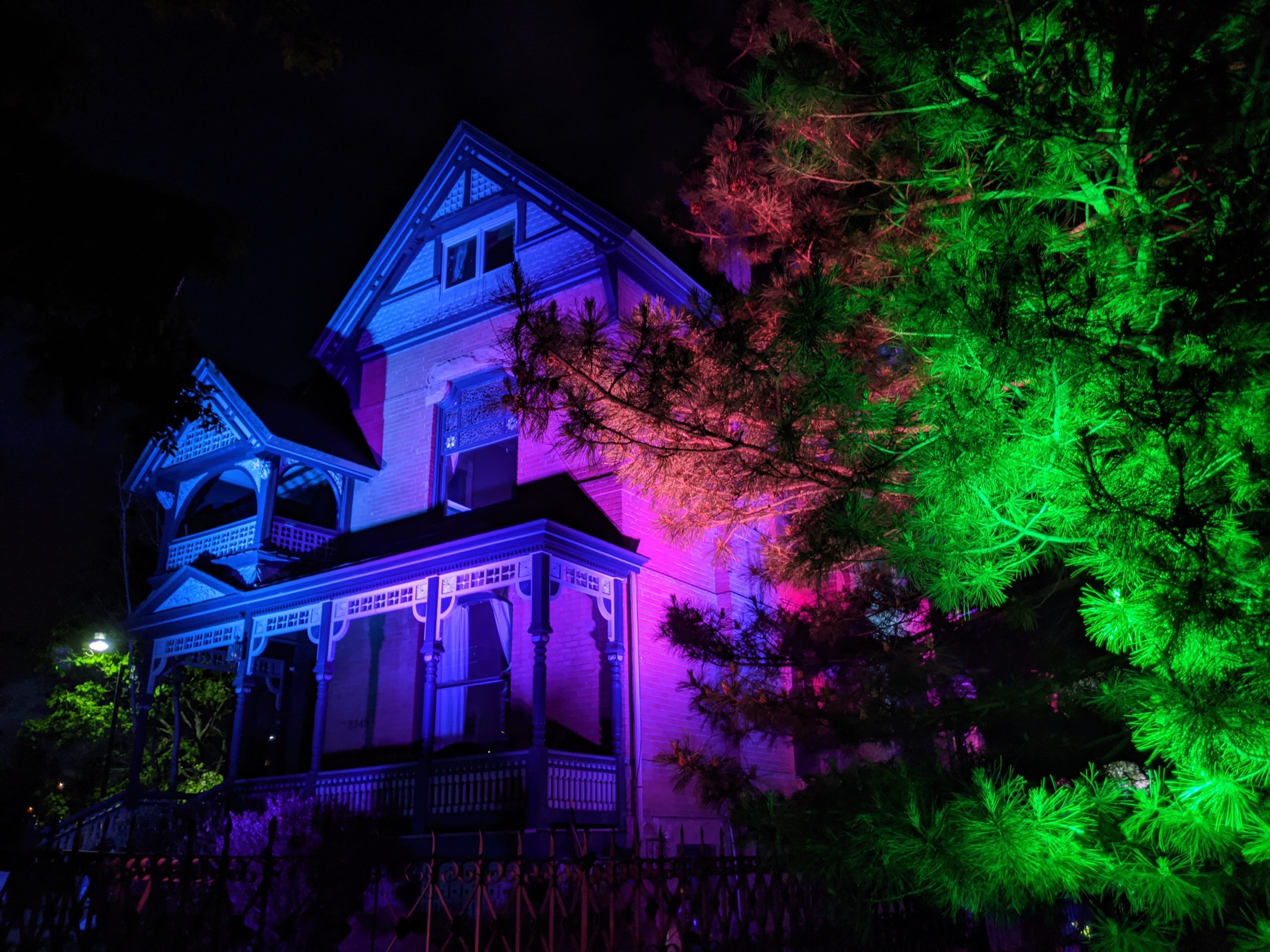
 Groups like the Project for Public Spaces have valuable information on the best ways to move forward with engaging community spaces in this time of transition. In our recent Experiential Design Playbook: Solutions for Engagement During COVID-19 & Beyond, Alt Ethos outlines a number of inspirational designs for public spaces that bring joy and engagement to our communities in creative and safe ways. Via projection mapping, LED wash lighting, and no-touch interactive displays – an entire public square can be activated. Whether we are gathering six feet apart in a public square, or passing through our usual main street now filled with outdoor public seating options — an experience can be illuminated with creative lighting design in simple and impactful ways.
Groups like the Project for Public Spaces have valuable information on the best ways to move forward with engaging community spaces in this time of transition. In our recent Experiential Design Playbook: Solutions for Engagement During COVID-19 & Beyond, Alt Ethos outlines a number of inspirational designs for public spaces that bring joy and engagement to our communities in creative and safe ways. Via projection mapping, LED wash lighting, and no-touch interactive displays – an entire public square can be activated. Whether we are gathering six feet apart in a public square, or passing through our usual main street now filled with outdoor public seating options — an experience can be illuminated with creative lighting design in simple and impactful ways.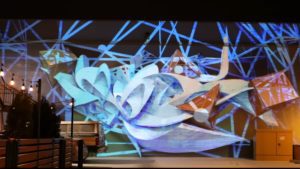 When people are venturing out with their families this summer, they will be on the hunt for engaging experiences, community events, and comfortable interactions that will give a much-needed lift to their spirits. Seeing their favorite public places brought to life with light would be a great way to do just that. Through public installations and interactive experiences, such as the Illuminous interactive projection-mapped mural in Fort Collins, CO, our communities can be welcomed back to shopping and spending time in public spaces with fresh, inspired eyes.
When people are venturing out with their families this summer, they will be on the hunt for engaging experiences, community events, and comfortable interactions that will give a much-needed lift to their spirits. Seeing their favorite public places brought to life with light would be a great way to do just that. Through public installations and interactive experiences, such as the Illuminous interactive projection-mapped mural in Fort Collins, CO, our communities can be welcomed back to shopping and spending time in public spaces with fresh, inspired eyes.
